From the rooftop terrace of the Clove Hotel in Stone Town, I looked out over a sea of rusting tin roofs atop old coral and mortar buildings streaked with black mold.


At the edge of town ancient dhows – fat, wooden sailing vessels – bobbed on the gentle waves of the Indian Ocean.
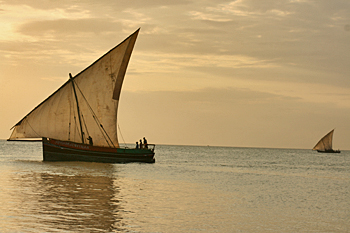
As the sun set, the muezzin at the mosque called worshipers to prayer, his sing-song chants piercing the evening air and mingling with the sounds of children running and laughing in the street below. This is Stone Town, the capital of the island archipelago that makes up Zanzibar.
Technically, Zanzibar is part of the country of Tanzania, but this affiliation is just the latest in a series that has alternately seen Zanzibar under the rule of Shirazi Persians, Portuguese, Omani Arabs, and British. Zanzibar gained independence from the British in 1963 as a constitutional monarchy under the Sultan of Oman. The African majority revolted against the sultan and in the first few days, between 5,000 and 15,000 Arabs and Asians were murdered and the new government overthrown. The revolutionaries then appointed Abeid Karume as President of the new revolutionary government and in a move that is still discussed today, he met with President Nyerere of Tanganyika and the two countries united to form Tanzania on 26 April 1964.
As a result of having been ruled by the Arab country of Oman for so many years, Zanzibar is predominantly (95%) Muslim. This Arab influence is also reflected in the Swahili language, which has incorporated many Arabic words, in the dress, and in the architecture found in Stone Town.
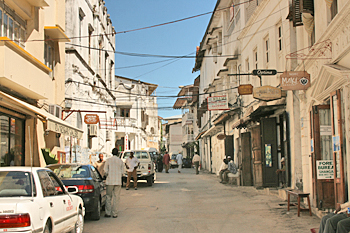

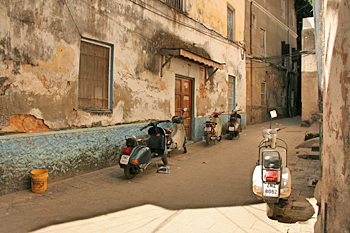
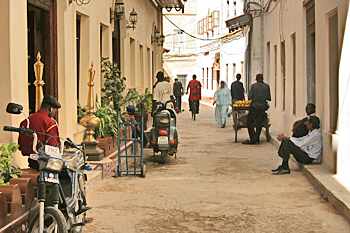
Built side by side with not so much as breathing space between them, homes can only be accessed through a haphazard maze of narrow passage- ways that snake through the Old City. Maps are of little use as there are no street signs and even the sun is invisible from within the bowels of the alleyways. The result is a fascinating if somewhat disorienting wandering through the maze.
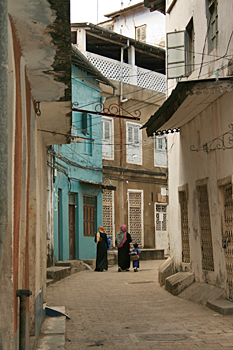
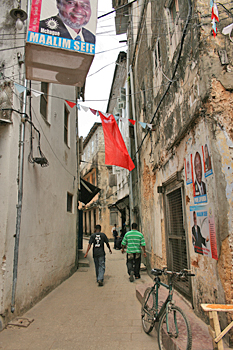

Stone Town is, after all, a tiny city. As my (apparently) circuitous route took me past the same corner for the third time, I took comfort in the thought that I must eventually stumble upon one of the main roads that border the Old City on three sides, or the sea that forms the fourth boundary.
Although now a part of Tanzania, Zanzibar has retained its unique flavor. Here the food is spicier than on the mainland – curries are a favorite and the required spices are close at hand, as Zanzibar has long been an important source of the spice trade, growing such exotics as nutmeg, vanilla bean, saffron, lemongrass, and cinnamon.
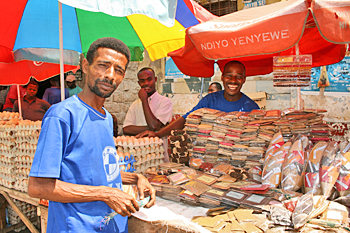
All these spice and more are readily available at the Central Market, where endless rows of wooden stalls offer everything from produce to toiletries.
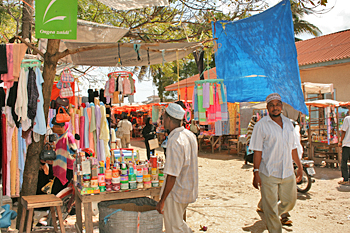
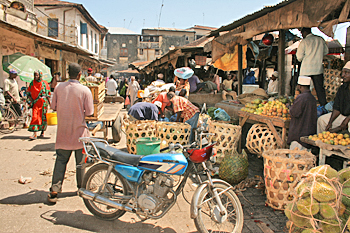
Men push heavy wooden two-wheeled carts down the narrow lanes, delivering goods to the shops. At one stall, women in brightly colored head scarves bargain over bolts of silk.
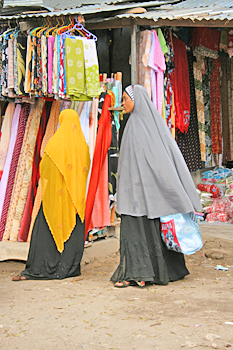
In the middle of a path, another group of women, clad from head to toe in black burkas that reveal only their eyes through a narrow slit in the fabric, examine a pile of shoes.
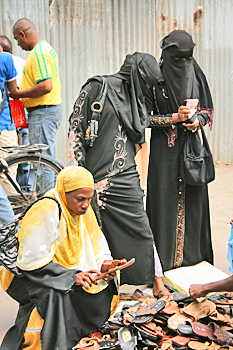
Music here is exotic as well. Originally imported from Egypt due to the island’s Arab connection, Zanzibar’s Taarab music has evolved from simple strains played on zither to a complex and evocative style that incorporates a variety of percussion and string instruments with local rhythms, Swahili language, and lyrics that deal with matters of everyday life. At a concert in the open-air amphitheater at the Old Portuguese Fort one evening, I watched in fascination as scores of local women arrived in floor-length evening dresses to hear their favorite Taarab singers. The stars above were outshone by their sequined gowns and glittering tiaras.
The spectacular beaches for which Zanzibar is so well known are on the northern tip of the island, however small but lovely pocket beaches can be found in Stone Town as well, although beach-goers must share the shoreline with tour boats, car ferries, and a working fishing fleet that daily delivers fresh catch to the food vendors that line the shore each evening as the sun sets over the bay.
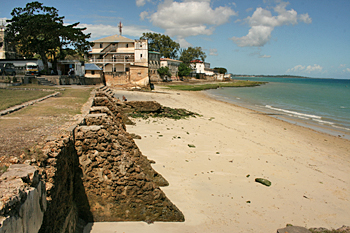
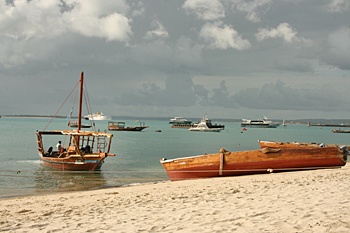
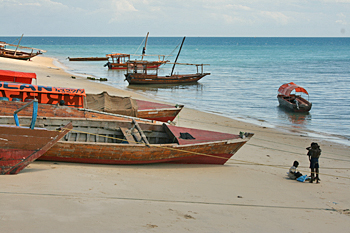
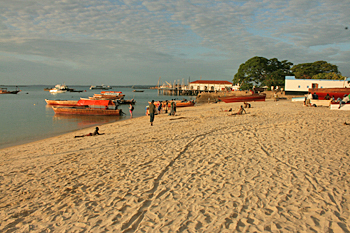

I will be heading north in a few days to lie on these spectacular beaches, but for now I am contented just to lean back on the sand and watch the golden sun set into the ocean.
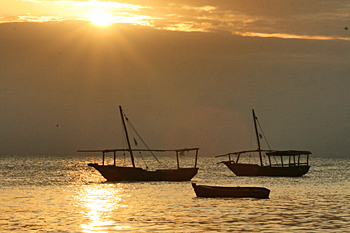

Hi Barbara,
Really enjoyed reading your blog post and your bio about quitting work to see greater things – good decision!
Zanzibar really is a magnificent island, the food market you have taken a picture of is called Forodhani gardens food market and is located on the sea front of Stone Town – lovely food is served there every evening. I have never had any problems taking pictures in Zanzibar either.
Thanks Barbara for this wonderful post, your story about your travels are inspirational. I noticed you’ve taken many wonderful pictures but I’m curious to know how the locals responded in a Muslim location such as Zanzibar?
Hello Luxury Vacations:
The response to me taking photos was different in different countries. In Zimbabwe. the locals ASKED me to take their photos. In Tanzania they were angry even if I tried to take a general street shot. In Zanzibar, which is actually part of Tanzania, the people were more open to photos and I really loved the Island!
Barbara
I recently came accross your blog and have been reading along. I thought I would leave my first comment. I dont know what to say except that I have enjoyed reading. This is a really great site with alot of good well written post.Found this today via google will i was killing some time.I just say how stunning your website is? I will be coming back and hopefully be able to contribute to the site. Thanks so much for the extra information.
it’s really very nice stuff , enjoy while reading your post. saved this blog i will keep checking here. keep the good work up.